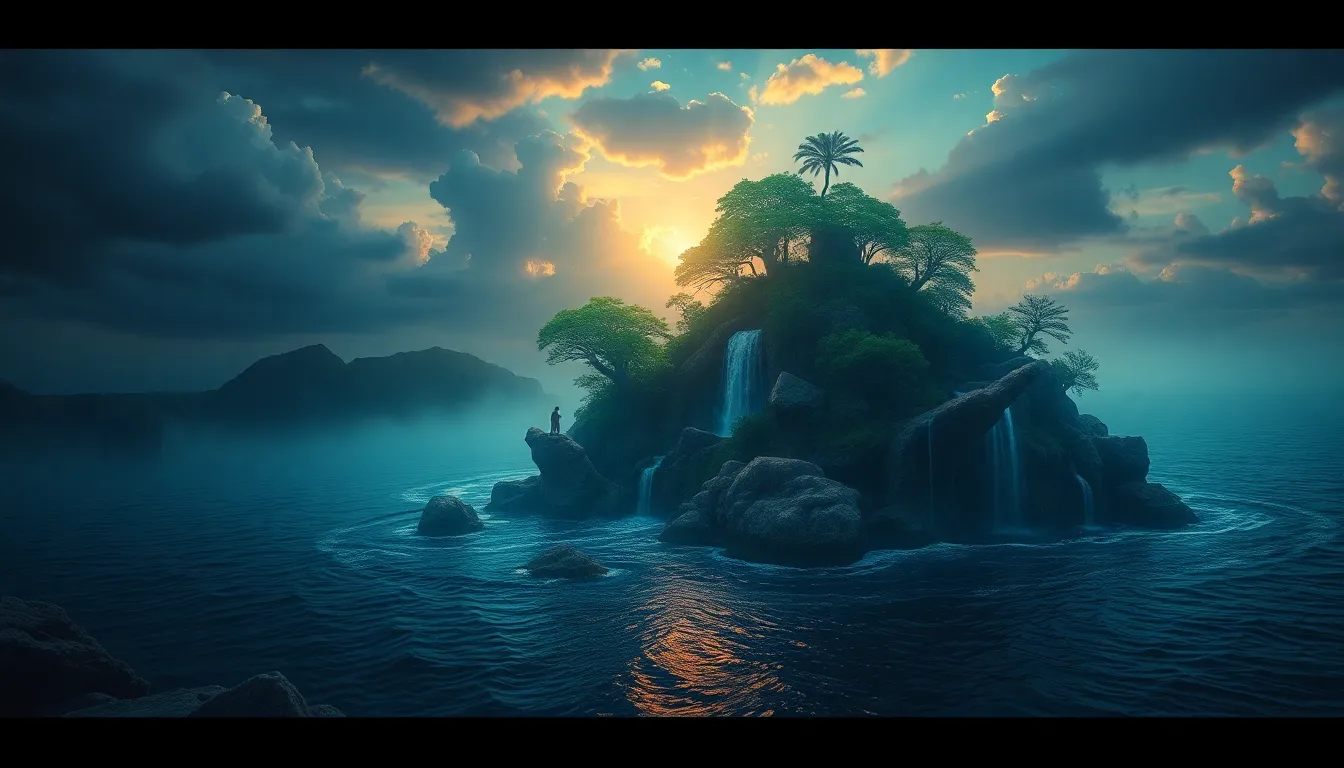The Island of Eternal Youth: Myths of the Fountain of Youth
Introduction
The myth of the Fountain of Youth has captivated the human imagination for centuries, representing an elusive quest for eternal youth and vitality. This legendary spring, said to restore the youth of anyone who drinks from it, has significant cultural resonance, symbolizing humanity’s age-old desire to defy the inevitable passage of time.
Various cultures around the world have their interpretations of this myth, often associated with notions of immortality and revitalization. Central to this mythos is the concept of the Island of Eternal Youth, a mythical land believed to hold the secrets to perpetual youth.
Historical Origins of the Myth
The roots of the Fountain of Youth myth can be traced back to ancient civilizations. Many cultures have stories that reflect a longing for youth and immortality, such as:
- The Greek legend of Tithonus, who was granted eternal life but not eternal youth.
- The Chinese myth of the Peaches of Immortality, which confer longevity to those who consume them.
- Native American legends about sacred waters that could restore health and youth.
Explorers played a pivotal role in popularizing the legend of the Fountain of Youth, particularly during the Age of Discovery. Notably, Spanish explorer Juan Ponce de León embarked on a quest in the early 16th century to find this miraculous spring, believing it to be located in the Americas. His journey, although he never found the fountain, cemented the myth in the cultural consciousness.
Cultural Variations of the Fountain of Youth
Across different cultures, the themes surrounding youth and immortality manifest in various forms. For instance:
- In Greek mythology, the story of the Golden Apples of the Hesperides includes themes of eternal beauty and youth.
- In Chinese tradition, the quest for immortality often involves mythical beings and elixirs that grant long life.
- Native American stories frequently include natural elements that possess healing and rejuvenating powers.
These varied narratives highlight a universal human preoccupation with aging and the desire to preserve youthfulness, influenced by local legends and folklore.
The Island of Bimini: A Case Study
Bimini, an island in the Bahamas, has gained notoriety as a supposed location of the Fountain of Youth. Historically, Bimini’s significance lies in its connection to Ponce de León’s explorations and the allure of its pristine waters. Local lore suggests that the island is home to healing waters that possess miraculous properties.
Archaeological findings on the island, including underwater formations, have fueled speculation about its mystical past. Modern interpretations of Bimini as a site of tourism related to the Fountain of Youth have led to attractions that celebrate this enduring myth.
The Psychology Behind the Pursuit of Youth
The fascination with youth and beauty is deeply ingrained in human psychology. The desire to remain youthful often stems from societal standards that prioritize youthfulness as synonymous with beauty and vitality. This obsession can lead to:
- Increased anxiety regarding aging.
- Pressure to conform to unrealistic beauty standards.
- Desire for anti-aging solutions and treatments.
Myths like the Fountain of Youth reflect societal anxieties about aging, highlighting a tension between the inevitable process of growing old and the cultural ideals of youth.
Myth vs. Reality: Scientific Perspectives on Aging
While the myth of the Fountain of Youth is alluring, modern science provides a clearer understanding of aging. Research in the field of gerontology examines the biological processes of aging, seeking insights into longevity. Some areas of focus include:
- Cellular regeneration and its potential to extend lifespan.
- Genetic factors that influence aging.
- Innovations in anti-aging therapies, such as stem cell therapy and gene editing.
This scientific exploration often blurs the line between mythological aspirations and tangible advancements, raising questions about the nature of aging and the possibility of extending youthfulness.
The Fountain of Youth in Popular Culture
The myth of the Fountain of Youth has permeated popular culture, inspiring countless depictions in literature, film, and art. Notable works that reference this enduring legend include:
- The Curious Case of Benjamin Button, which explores themes of aging in reverse.
- Peter Pan, which embodies the desire to remain forever young.
- Various films and books that feature quests for rejuvenation or immortality.
These portrayals shape public perception of aging, often reinforcing cultural ideals surrounding youth and beauty.
Modern-Day Pursuits of Eternal Youth
In contemporary society, the pursuit of youth has manifested in various trends within beauty and wellness industries. These include:
- Popular anti-aging skincare products and treatments.
- Wellness regimes aimed at promoting vitality and health.
- The influence of social media in promoting youth-centric lifestyles.
However, the pursuit of eternal youth raises ethical considerations, particularly regarding the accessibility and safety of anti-aging treatments.
The Spiritual Dimension of the Fountain of Youth
Beyond physical rejuvenation, the Fountain of Youth also encompasses spiritual interpretations. Many philosophies suggest that true youthfulness stems from inner vitality and a positive outlook on life. Practices that promote a youthful spirit include:
- Meditation and mindfulness, which foster mental well-being.
- Engagement in creative pursuits that ignite passion.
- Maintaining strong social connections and community ties.
This spiritual dimension emphasizes that youth is not merely a physical state but also a mindset.
Conclusion
The enduring allure of the Fountain of Youth myth encapsulates humanity’s deep-seated desire to overcome the inevitability of aging. From its historical origins to its cultural variations and modern-day implications, the quest for eternal youth continues to resonate across generations. Whether through scientific advancements or spiritual practices, the search for vitality and rejuvenation reflects our collective hope for a life that defies the constraints of time.


